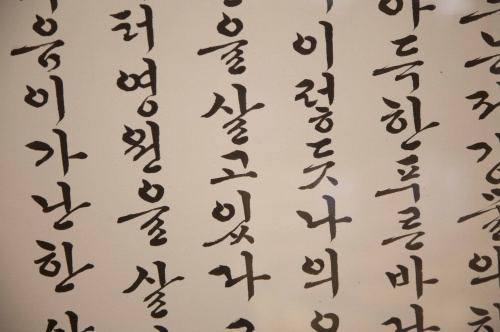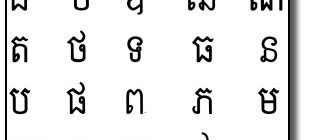Interested in Korean Calligraphy? Learn more about this highly revered Korean calligraphic art and its application in today’s art world…
Korean calligraphy is part of the Sinosphere region and it’s a highly coveted skill. The regions which practiced and perfected the art of calligraphy include Japan, Korea, China and Vietnam. There are some underlying similarities between the Southeast Asian calligraphic style and these have been standardized over the years. Each country utilizes its native alphabet to create beautiful scrolls and print work in calligraphic text.
The art of Korean calligraphy has had a great influence on the development of its raw material and techniques like wash painting and ink. These techniques are created by using a basic set of tools. Different art forms have evolved over time from Korean calligraphy and you can find many ink stone, carvings, scroll and seals along with paperweights crafted with calligraphic designs.
The History and Classification of East Asian Calligraphy
In modern times East Asian calligraphy can be classified as an art practiced in these countries. However, many scholars from the Asian countries have objected to this definition and refer to it as a method of writing alphabets and characters.
Korea and China and Japan are known for their well-documented articles and books pertaining to the origin and use of the alphabet. Writing has been considered a highly revered art form since ancient times in these countries and alphabets were preserved in authenticity and originality through these texts. Therefore, classifying East Asian calligraphy as an art form is considered inaccurate. Art in these countries is used to define paintings and sculpture, not writing.
The Four Treasures of Korean Calligraphy
For the study of language preservation and automation techniques the basic tools required include ink, ink brush, paper and ink stone. Together these are known as the four treasures of the study of Chinese calligraphy or four friends of the study in Korean calligraphy. You can find calligraphers commonly using paperweights as well as desk pads to support their work.
Major Scripts Utilized in Korean and Chinese Calligraphy
There are basically five scripts which are utilized in the creation of Korean and Chinese calligraphy. These include the clerical script, seal script, regular script and the cursive and semi-cursive script. Korean calligraphy follows two basic alphabet structures known as the Hanja or Hangul.
The Chinese characters system had evolved into the Korean Hanja and Hangul language and alphabet structure. The Hanja characters originate from the Chinese word hanzi and are attributed to the Han Dynasty. They basically are ideograms and each character corresponds to a word and has its own meaning. When used in combination with other characters more words can be derived. The Korean alphabet system uses a lot of Chinese characters to supplement its alphabet.
Different Applications of Korean Calligraphy
Today you can obtain hand-brushed Korean calligraphy scrolls with either favorite phrases, a person’s name or poetry printed on them. These make for wonderful personalized gifts and customized scrolls can be created in different sizes and ordered in various quantities. From Hanja or Hangul characters, you can procure different scrolls printed out as required. In the computerized age most of these can be prepared in a digital format as well.





